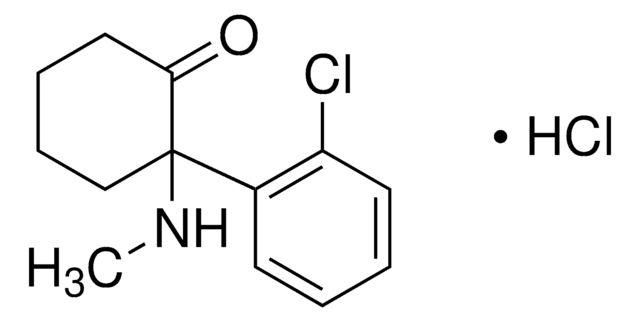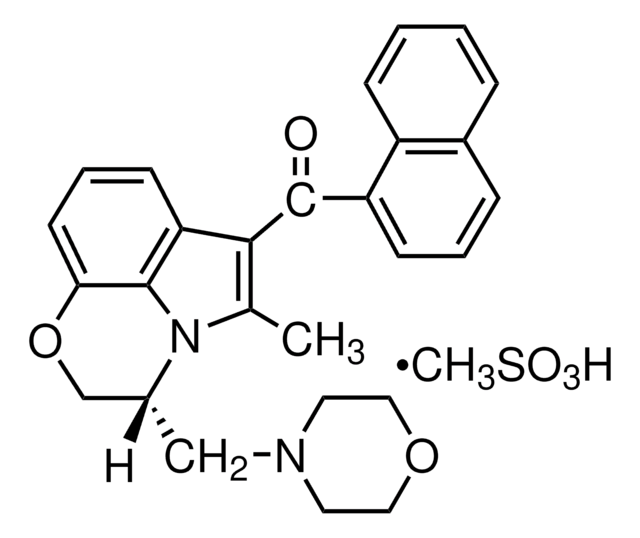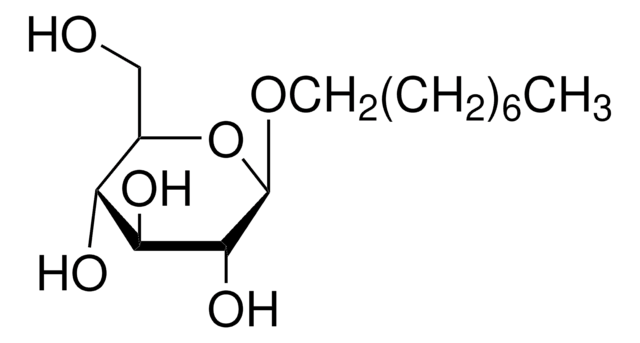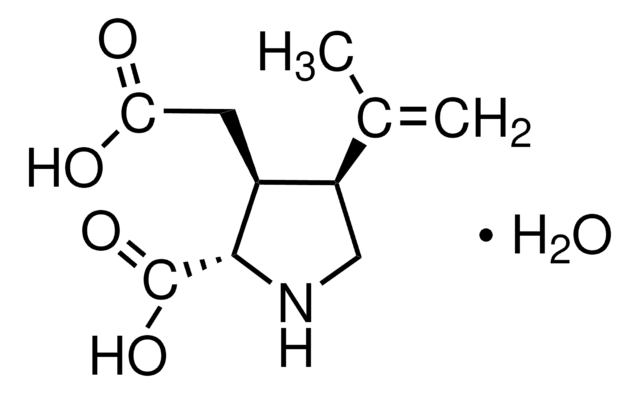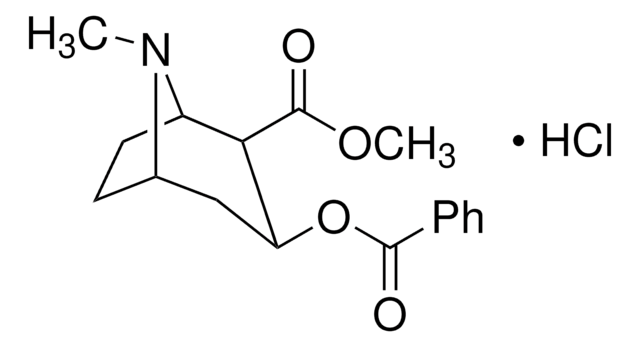P3029
Phencyclidine hydrochloride
Sinónimos:
1-(1-Phenylcyclohexyl)piperidine hydrochloride, PCP hydrochloride
About This Item
Productos recomendados
Formulario
powder
Nivel de calidad
control farmacológico
USDEA Schedule II; Home Office Schedule 2; stupéfiant (France); kontrollierte Droge in Deutschland; regulated under CDSA - not available from Sigma-Aldrich Canada; psicótropo (Spain); Decreto Lei 15/93: Tabela IIA (Portugal)
solubilidad
H2O: 11.2 mg/mL
0.1 M HCl: 18.4 mg/mL
methanol: 30 mg/mL
cadena SMILES
Cl.C1CCN(CC1)C2(CCCCC2)c3ccccc3
InChI
1S/C17H25N.ClH/c1-4-10-16(11-5-1)17(12-6-2-7-13-17)18-14-8-3-9-15-18;/h1,4-5,10-11H,2-3,6-9,12-15H2;1H
Clave InChI
BUAJNGPDPGKBGV-UHFFFAOYSA-N
¿Está buscando productos similares? Visita Guía de comparación de productos
Acciones bioquímicas o fisiológicas
Características y beneficios
Palabra de señalización
Danger
Frases de peligro
Consejos de prudencia
Clasificaciones de peligro
Acute Tox. 3 Oral - STOT SE 3
Órganos de actuación
Central nervous system
Código de clase de almacenamiento
6.1C - Combustible acute toxic Cat.3 / toxic compounds or compounds which causing chronic effects
Clase de riesgo para el agua (WGK)
WGK 3
Punto de inflamabilidad (°F)
Not applicable
Punto de inflamabilidad (°C)
Not applicable
Equipo de protección personal
Eyeshields, Faceshields, Gloves, type P2 (EN 143) respirator cartridges
Elija entre una de las versiones más recientes:
¿Ya tiene este producto?
Encuentre la documentación para los productos que ha comprado recientemente en la Biblioteca de documentos.
Los clientes también vieron
Nuestro equipo de científicos tiene experiencia en todas las áreas de investigación: Ciencias de la vida, Ciencia de los materiales, Síntesis química, Cromatografía, Analítica y muchas otras.
Póngase en contacto con el Servicio técnico
